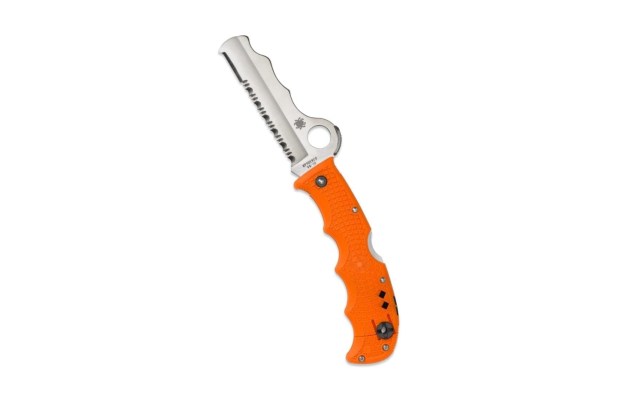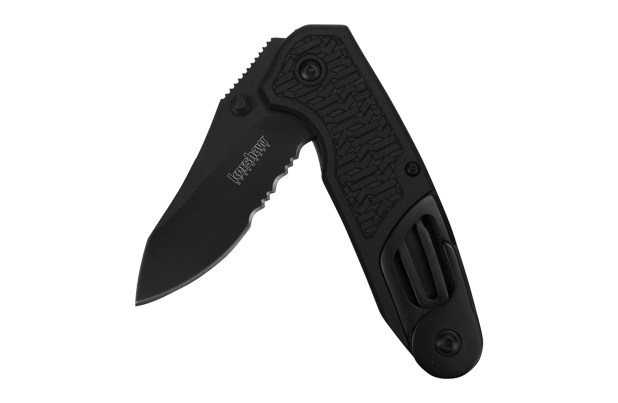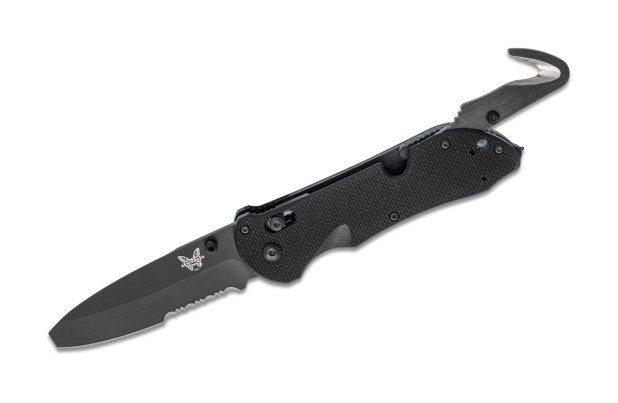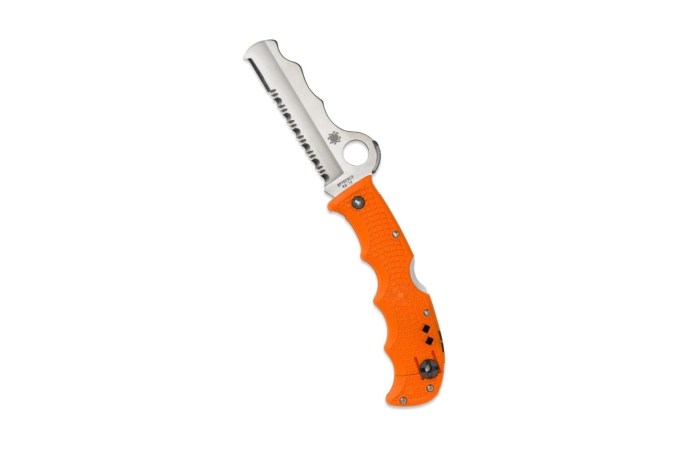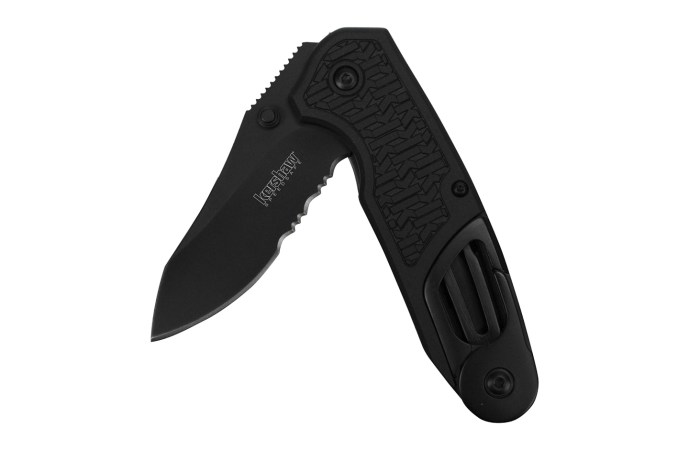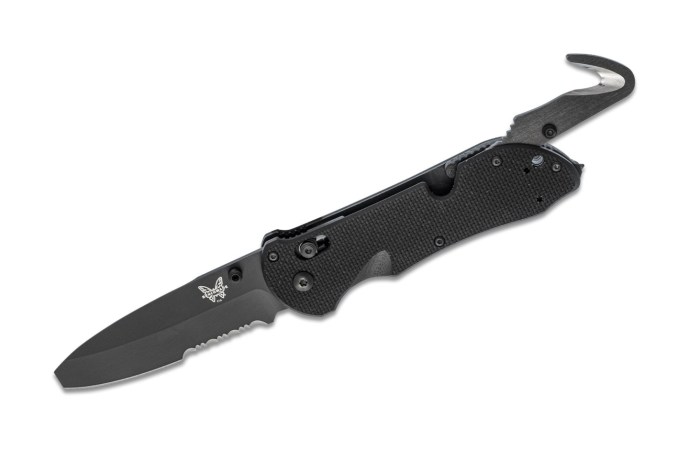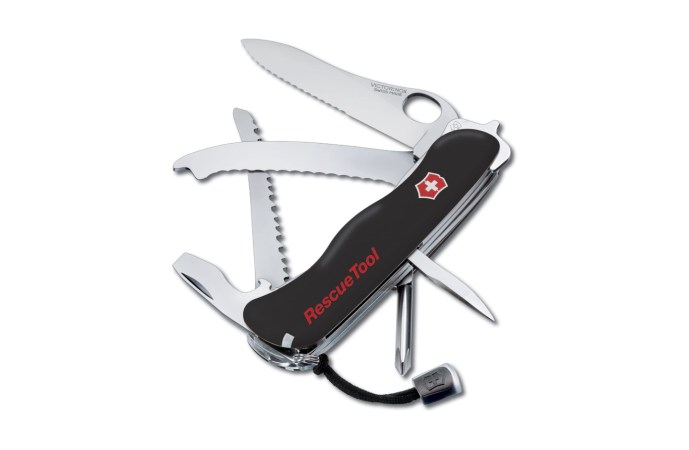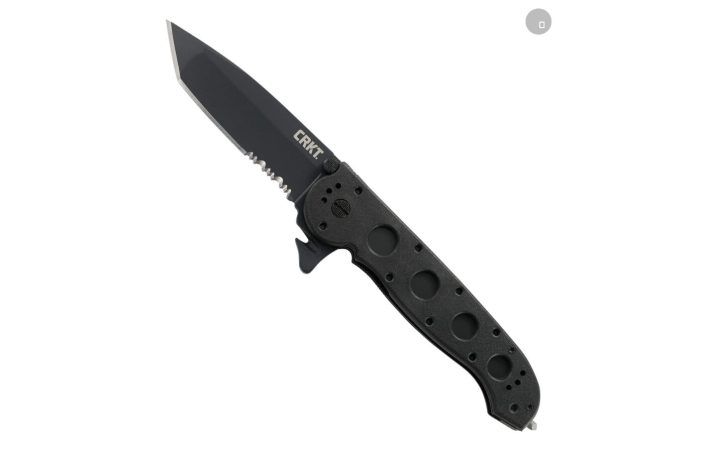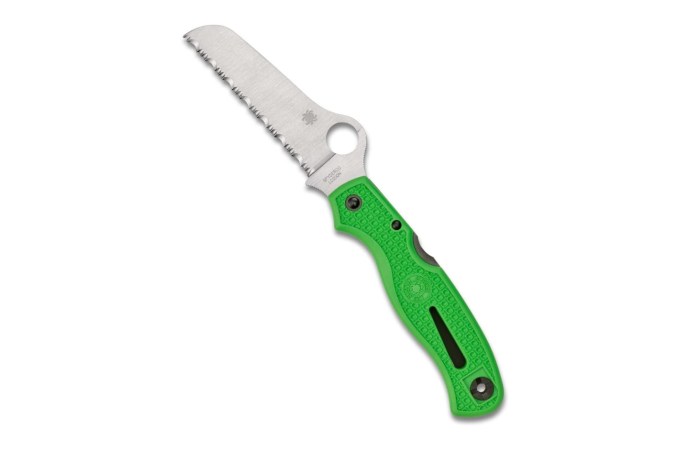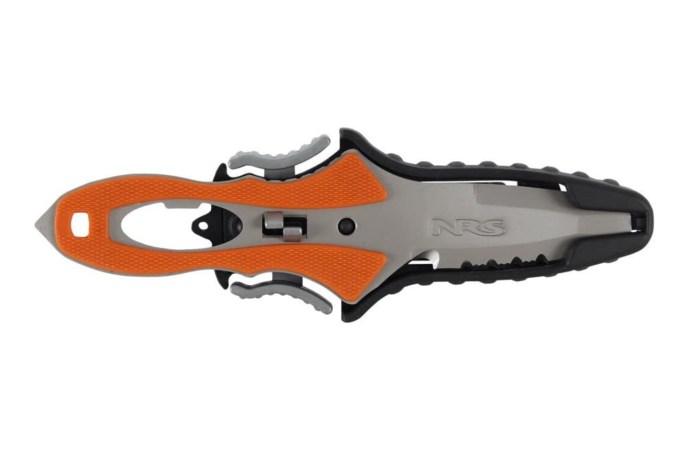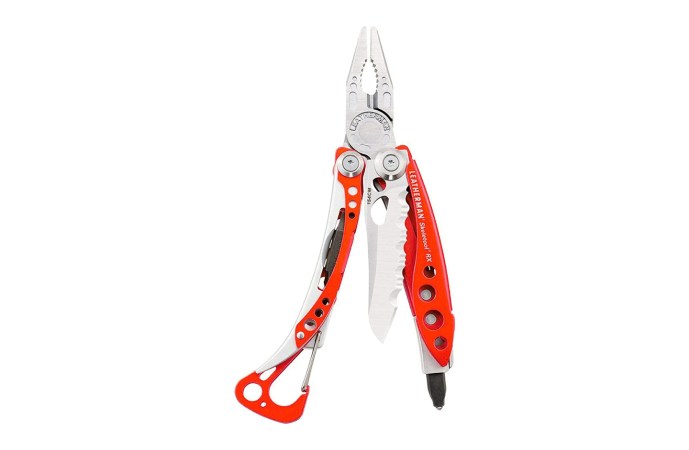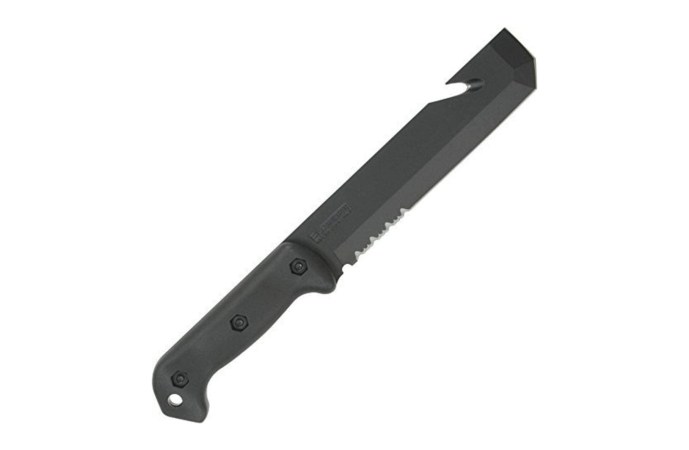We may earn revenue from the products available on this page and participate in affiliate programs.
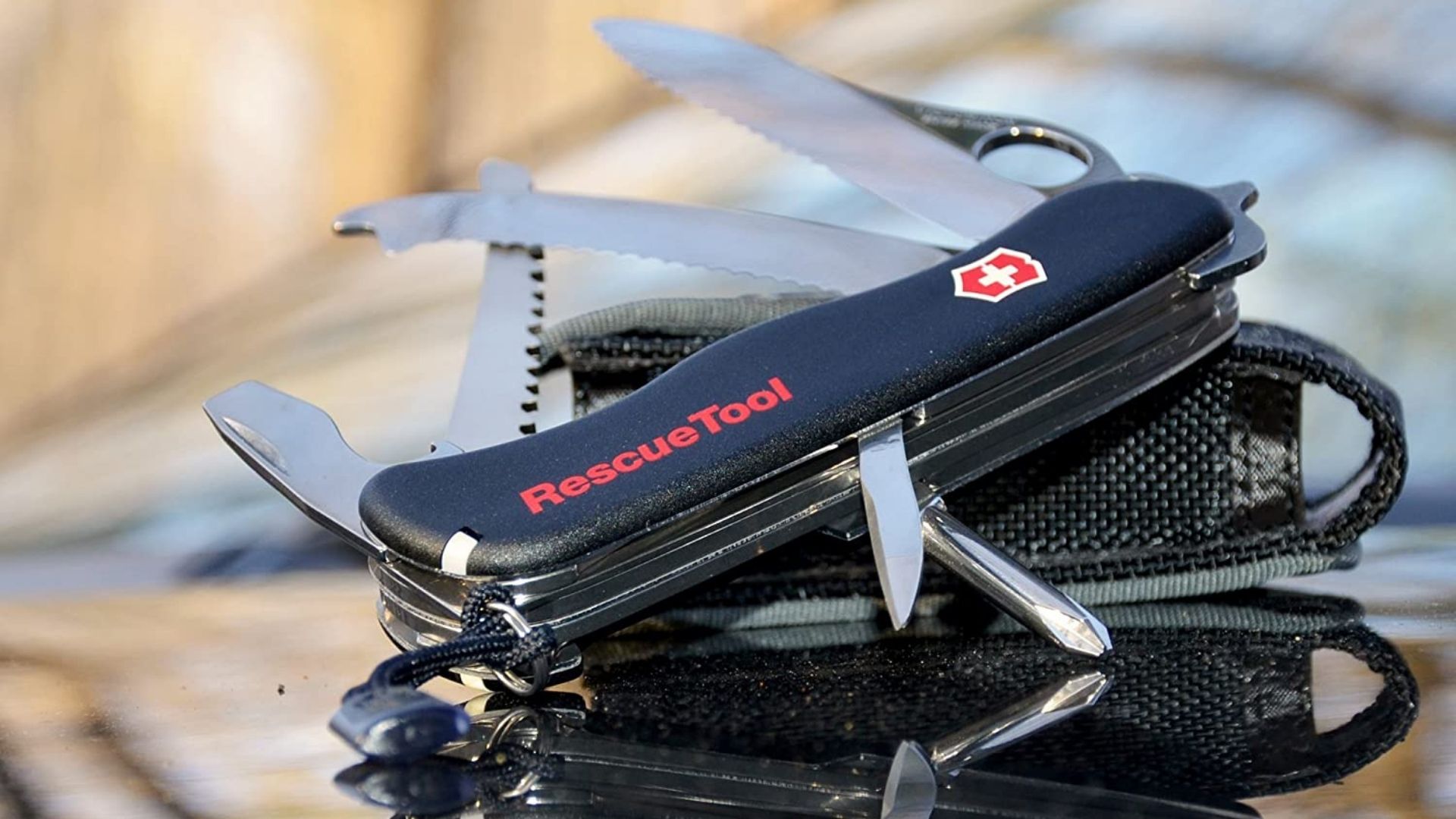
While driving home, some hotshot cuts you off, forcing you to slam on the brakes and flipping you off as he barrels past. Before you can finish your mental prediction, he clips another car, and they both go careening off the road. You and a couple of nearby motorists pull over and rush to the scene. As you exit your car, you grab your emergency kit and involuntarily slap your pocket, checking to make sure your rescue knife is ready and waiting in its proper place. While someone calls 911 and others approach the minivan, you head toward the speedster. His car has rolled a full 360 degrees, landing upright again, but effectively sealing him inside with a bloody scalp and a smoking engine bay in front of him. You know help is coming, but the kid needs help pronto. He is conscious, so you signal to him what you plan to do. You yank your rescue knife from your pocket, then shatter the window with its carbide tip.
It’s a good thing you were ready.
- Best Overall: Spyderco Assist
- Best Budget: Kershaw Funxion EMT
- Best for EMTs: Benchmade Triage 916SBK
- Best Multitool: Victorinox Rescue Tool
- Best Tactical: CRKT M16-14ZLEK
- Best Maritime: Spyderco Atlantic Salt (SpyderEdge)
- Best for River Rafting: NRS Pilot Knife
- Best Minimalist Multitool: Leatherman Skeletool RX
- Best Heavy-Duty: Ka-Bar Becker Tac Tool
Best Overall
Spyderco Assist
Best Value
Kershaw Funxion EMT
Best for EMTs
Benchmade Triage 916SBK
Best Multitool
Victorinox RescueTool
Best Tactical
CRKT M16-14ZLEK
Best Maritime
Spyderco Atlantic Salt
Best River
NRS Pilot Knife
Best Minimalist Multitool
Leatherman Skeletool RX
Best Heavy-Duty
Ka-Bar Becker Tac Tool
Things to consider before buying a rescue knife
Reasons to buy a rescue knife
Professional rescuers, such as EMTs, firefighters, and police officers, make a living facing down life-or-death situations which push them, their training, and their gear to the limit. Whether used on and off duty, quality rescue knives frequently prove their worth in both high-stakes situations and mindless tasks. For the good neighbors among us, a dedicated rescue knife can be an asset in everyday life. An EDC rescue knife can handle all your everyday blade tasks while still being ready to handle a worst-case scenario. The Good Samaritan was able to give care, because he carried the gear he needed to aid another human being.
Types of rescue knives
Despite their wide array of shapes and sizes, rescue knives often fall into one of three categories: EMS/EMT, tactical, and water rescue. EMS/EMT knives are tough, durable blades designed to facilitate quick administration of emergency care, usually offering a (partially) serrated edge, blunt tip, glass breaker, belt or strap cutters, and single-handed opening for maximum effectiveness. Other than a sharp tip and subdued coloring, tactical rescue knives are little different from EMS knives. Water rescue knives, however, are quite unique. In maritime environments, rope and saltwater are your rescue knife’s biggest adversaries, so a highly corrosion-resistant knife with a serrated blade in a sheepsfoot or Wharncliffe pattern is an absolute must. Rafting knives, however, usually possess blunted spear tip blades and a more affordable stainless steel construction.
Key features of a rescue knife
Unlike some knives, a true rescue knife must include very specific features. To start, look for the right blade shape and edge combination. In most emergency situations, a blunted blade with a serrated edge is the safest bet to assist a victim. The blade steel you choose also matters as understanding the strengths and weaknesses of various materials can save you plenty of headaches. (We highly recommend you check out the blade steel guides put together by the folks at Blade HQ, Gear Junkie, and Knife Informer.) Your blade’s grip texture and material determine whether or not you can actually save a life, while the knife’s retention system (clip, sheath, etc.) keeps it secure until needed. A reliable single-handed opening can increase your focus when adrenaline is running high but be aware of local knife laws regarding spring-assisted opening. Many rescue knives (and all multitools) include valuable tools to handle unique emergency needs, so pay attention to add-ons like carbide-tipped glass breakers and belt/strap/cord cutters.
Rescue knife pricing
Rescue knives come in all shapes and sizes, and so do their price tags. Basic rescue folders usually come in around $25 to $50. Reliable blades feature good quality blade steel, a partially (or fully) serrated edge, a carbide window breaker, and a seat belt cutter, but beware of gimmicks at this price point. For something with higher quality or specialization, you’ll end up shelling out somewhere between $50 and $125. These knives run the gamut of fixed blades, folders, and multitools. When they skip the extras, these knives instead opt for high-end blade steel and specialized blade profiles. Anything over $125 will be the cream of the crop.
FAQs about rescue knives
Q: What is the best steel for rescue knives?
A: Most rescuers will want to go with something mainstream, such as 420HC, 8Cr13MoV, VG-10, or CPM S30V. If you expect to work in and around salt water, then H1 and LC200N are all excellent choices due to their corrosion resistance. Just keep a sharpener handy.
Q: Where should I carry my rescue knife?
A: Your rescue knife’s storage location will depend on your activities while carrying and what position(s) you are likely to be in while responding to an emergency. For example, Coast Guard rescue swimmers usually have a dedicated pouch for their blades, while EMT’s are more likely to have a bag or pants with appropriate exterior pockets.
Q: Are there discount programs for rescue knives?
A: A good handful of reputable manufacturers offer discount programs for their rescue knives and multitools. Offhand, we can point you to Benchmade’s Pro Deals, Leatherman’s Discount Programs, Microtech’s Service Personnel Program, and Spyderco’s OpFocus Professional Purchase Program, but other manufacturers also offer discounts.
Final thoughts
As more and more knifemakers produce high-end rescue knives, the Spyderco Assist still sets the standard against which all others must be measured. The long rescue-ready blade uses high-end steel to achieve maximum dependability in high-stress emergencies, and the retractable glass breaker stays out of the way until needed. Best of all, the blade can easily be deployed with one hand without using spring-assisted or automatic opening features, legal black sheep in North America. While it does run a bit on the expensive side, very few knives can beat the Assist’s combination of features, reliability, and cost.
Methodology
I’ve been carrying knives since I received an Old Timer for my eighth birthday, and I have spent much of my professional life as an aquatic rescuer, gaining valuable training and insight into the world of emergency medical care. I have covered IFAKs, tourniquets, trauma shears, first aid kits, and how to build your own first aid kit. If you’re looking for an EDC knife of one kind or another or any other emergency medical equipment you can depend on, chances are I’ve covered it. (When covering medical care topics beyond the scope of my training, I will directly reference authorities with appropriate training.)
At The Gear Locker, we pride ourselves on arming you with the intel you need to make a well-informed purchase. While we go the hands-on route whenever possible, our attempts to test top-notch gear are thwarted at times, so to bring you the best intel available, we listen to those who have firsthand experience with the gear you want. For this guide, Adam Robbins, Blade HQ, EMT Training Station, Gear Junkie, Knife Buzz, Knife Informer, Knife Sharpener Guy, OffGrid, Rafting Magazine, Reviews4 More, and our own Scott Murdock have earned my deep gratitude for their assistance.
